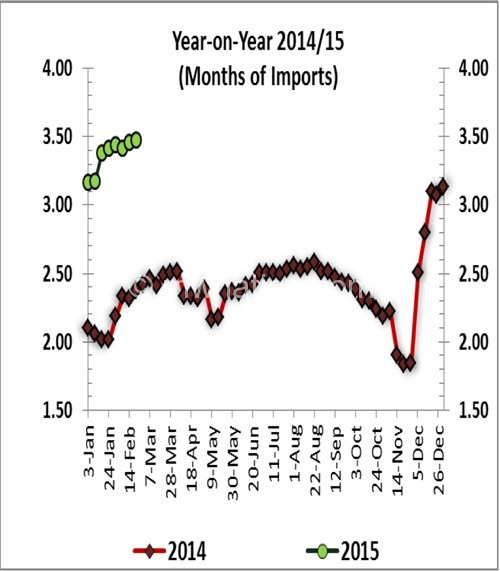Malawi cumulative import cover at five months
Malawi’s cumulative import cover—the number of months of imports its reserves can pay for—has peaked at about five months of imports, an equivalent of $946.6 million, Reserve Bank of Malawi (RBM) figures have shown.
This is in line with the common rule of thumb, which entails that reserves that cover three months’ worth of imports are adequate to ensure sustainable importation of essential goods and services.
 RBM figures show that as of Monday this week, gross official reserves, which are under the direct control of the central bank, have increased and settled at $665.35 million, or 3.48 months of imports.
RBM figures show that as of Monday this week, gross official reserves, which are under the direct control of the central bank, have increased and settled at $665.35 million, or 3.48 months of imports.
The reserves have jumped from $661.04 million, or 3.46 months of import cover, the week before.
On the other hand, private sector reserves, which are under the direct control of authorised dealer banks (ADBs), consisting of ADB’s own forex position and foreign currency denominated account (FCDAs) balance of their clients, went up to $281.27 million, or 1.47 months of import cover.
This was a jump from $260.49 million, or 1.36 months, recorded in the prior month.
The country’s monthly import cover calculating figure is at $191 million, according to RBM.
The central bank has said the local unit, which was severely battered and lost a quarter of its value between August and December 2014, appreciated against the dollar, but depreciated versus the British pound, euro and South African rand and traded at around K438.0491 against the dollar on Monday.
Malawi, an agro-based economy, experiences seasonality in the foreign exchange market. Thus, the time between September and March is a lean supply period largely due to closure of the sales of tobacco, which contributes about 60 percent of foreign exchange earnings. This period is also characterised by heavy importation of agricultural inputs such as fertiliser, which tend to inflate the import bill, exerting pressure on the local currency.
But RBM spokesperson Mbane Ngwira said the gain in the value of the kwacha is a result of economic development such as the tightening of the monetary policy and other instruments such as liquidity reserve requirement (LRR) for forex deposits and foreign exchange receipts from some export commodities such as tea, sugar and pulses, among others.
Also, Preferential Trade Area (PTA) Bank bought a government debt denominated in kwacha.
Finance, Economic Planning and Development Minister Goodall Gondwe recently explained that following the swap, PTA Bank paid to RBM in dollars on behalf of Treasury.
“Instead of us owing RBM, we owe PTA Bank. They paid that borrowing from RBM in dollars. That is called currency swap because nobody is losing out.





